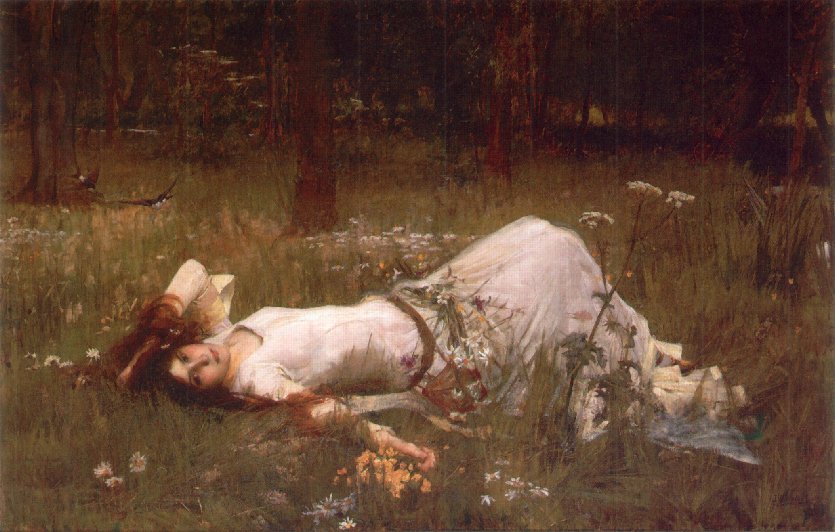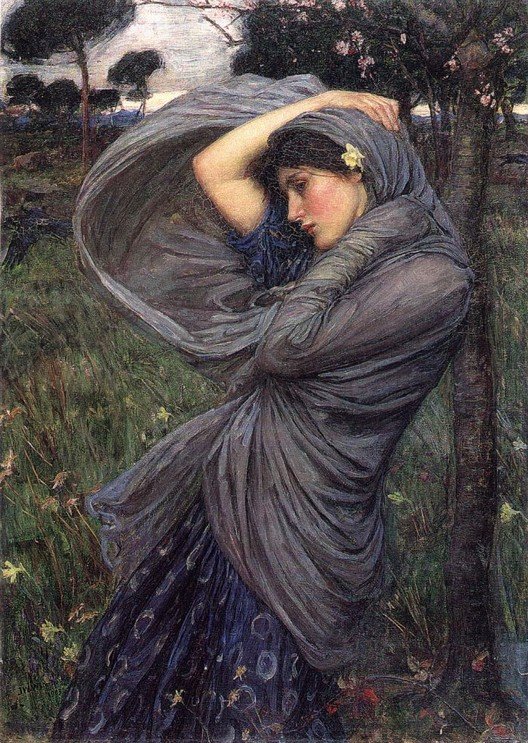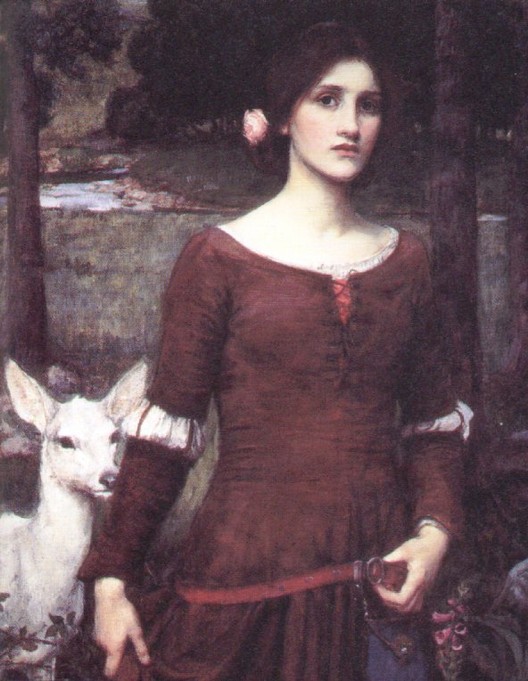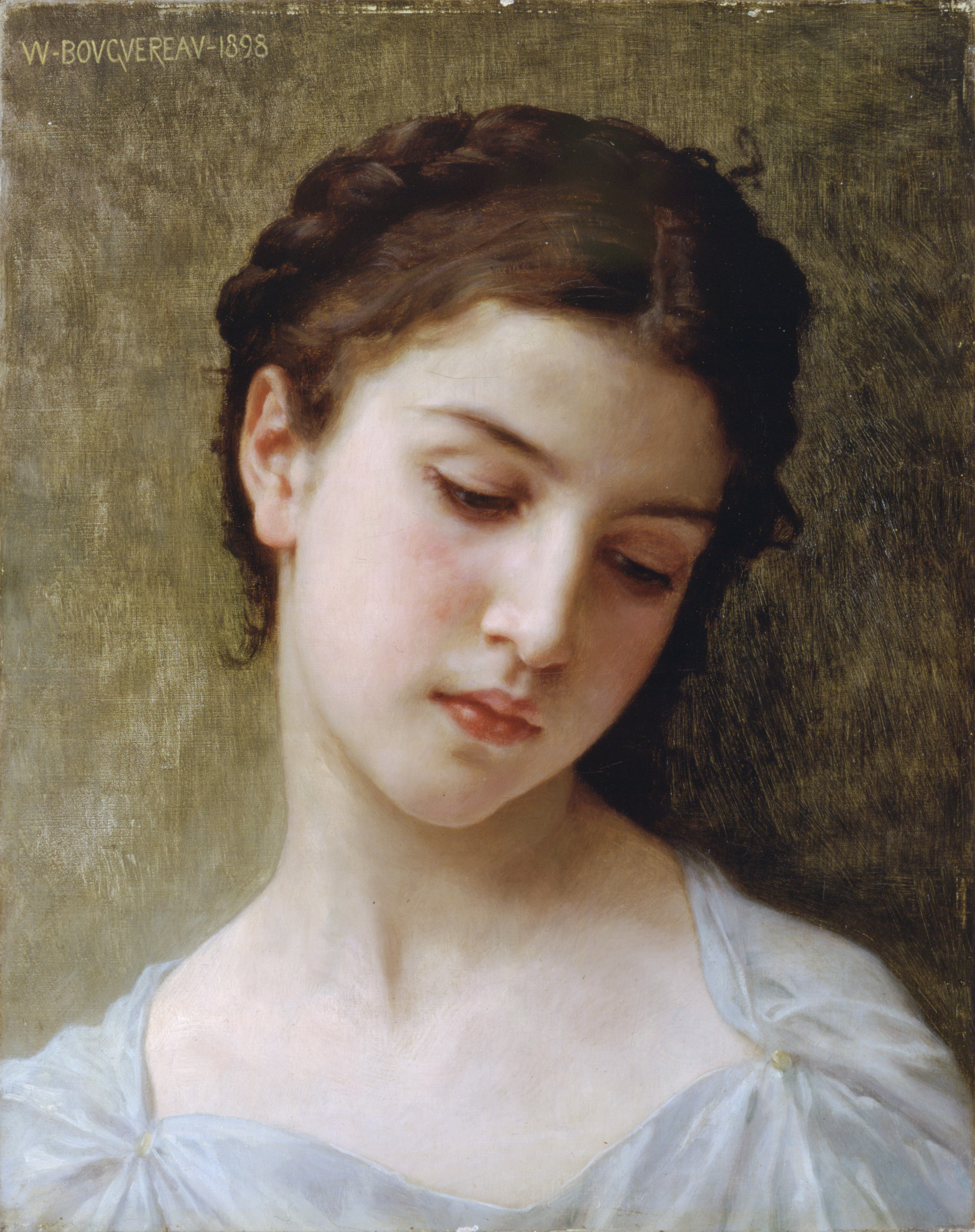See, I told you I wouldn't be too long. Now I am entering another phase of this blog, the one which will try and document my creative process. Barlowe will still undoubtedly distract me, and if anything else fascinating comes my way, expect a post on it. I suppose there is a focus...kinda.
The second book (well, first I suppose) that I received is one by Weta Workshop called The World of Kong, and documents the creative process behind the movie. Much like their work on The Lord of the Rings, these guys just really go all out to add a phenomenal level of detail. I've never heard of a "Lost World" movie having this much background work done on it, very little of which will be actually seen on screen. Just hearing about this work had in fact inspired me to try and work out the background to my story a lot more. I already had an island, strange natives, and archaic fauna, but this was only in the context of the story. I started to go beyond what I had written and began fleshing out an entire world. I think that even though you don't show the work directly, there still is a way of sensing a very fleshed out and realistic story. So I think it is interesting to finally get their book and to compare our concepts. I don't plan at all on copying creatures directly or avoiding certain "types" from their book, everything I create will take its own unique shape eventually. The most inspiration I got from this book is that Connor will come across a bestiary of sorts in the story, which will probably be created in real life as well. When I create something I realize that I try to express it in as many different ways as I can.
Aside from its significance to my pet project, The World of Kong is a fascinating and entertaining book in its own right. It doesn't appeal to my artistic aesthetic sense the way Barlowe and other
 painters can, but more to my imaginative and scientific side. The little story is that after all that business with the gorilla, expeditions were launched to the island to document the unique fauna. Those that survived found an absolutely incredible amount of biological wonders, and the significance of the find was compared to that of the New World. The island was very small (7 by 5 miles by my reckonin') and was rapidly shrinking, causing animals to be crammed together and giving the island an unbelievably crowded feel. This created some sort of insane super-Green Hell which really appeals to that Dinosaur-loving little kid in me. Of course, good things never last and the island was shortly destroyed by an earthquake before much could be learned about it. Lost information like that, especially really fascinating things, is a concept that bugs the hell out of me.
painters can, but more to my imaginative and scientific side. The little story is that after all that business with the gorilla, expeditions were launched to the island to document the unique fauna. Those that survived found an absolutely incredible amount of biological wonders, and the significance of the find was compared to that of the New World. The island was very small (7 by 5 miles by my reckonin') and was rapidly shrinking, causing animals to be crammed together and giving the island an unbelievably crowded feel. This created some sort of insane super-Green Hell which really appeals to that Dinosaur-loving little kid in me. Of course, good things never last and the island was shortly destroyed by an earthquake before much could be learned about it. Lost information like that, especially really fascinating things, is a concept that bugs the hell out of me.It is not going to be possible to give anything near a complete overview of that fauna, probably for the best considering copyright. There appear to be well over a hundred unique creatures, most of which are very bizarre and thus appealing to me. I'll try and try and give the overall impression of the island I got as well as talk about concepts I found particularly interesting. Regardless, this post could run very very long. The book is divided into different geographical areas (coast, lowlands, waterways, jungle, chasms, uplands), so I'll write my blog in the same style.
For Skull Island, the coasts contain some fairly typical species such as fur seals, seagulls, and others. Monitor lizards fairly similar to those on the mainland also inhabit this area. I suppose this place is the most "connected" with the outside world in some ways. Then of course there is a Limusaurus, a bizarre droopy faced marine amphibian occupying a placodont-like niche. Perhaps the Weta chaps were inspired by the bizarre marine amphibians that once existed...or they just made it up. Even more strangely, the shores are patrolled by a very large Rauisuchian Archosaur called Nefundusaurus. This is strange (to me) because these creatures were the dominant carnivores of the Triassic who went extinct and gave up the torch to Theropod Dinosaurs (the familiar meat-eaters). The even more massive Tartarusaurus looks like either a potential relative or some bizarre semi-quadrupedal Baryonychian Theropod with a Abelisaurid-like skull. The skulls of Rauisuchians and theropods often looked incredibly similar, enough for at least one scientist to claim relationship between the two. Kudos to whoever can remember that source, since it has escaped my mind. My suspension of disbelief was called into question with the absurdly dragon-like fish-eating theropod Peracerdon, ugh. It might have been a reference to the dragon-like creature in The Son of Kong, so I guess I'll let it slide. The section on human natives made me wonder about the oddly taboo nature of the human female areola and its mysteriously obscure nature in Western work, but that's a subject for a different day. The rest of the stuff here more than made up for it.
The lowland areas are the most shrunken on the sinking island and are home to some very familiar looking dinosaurs. Brontosaurus (Sauropod), Ligocristus (Hadrosaur), Ferrucutus
 (Ceratopsian), and Vastatosaurus (Tyrannosaur) look almost the same as their pre-KT ancestors and would be readily identifiable by just about anybody. Dinosaurs do seem to have been rather conservative at times, and I suppose 65 million years could go by with few major changes. I think that like the "familiar" fauna of seabirds and fur seals, the artists wanted to create a familiar-looking bunch of Dinosaurs to contrast with the other unfamiliar creatures. The public is incredibly unfamiliar with mammal-like reptiles (better referred to as Therapsids, Synapsids, Pelycosaurs, et cetera), and that is probably why Lycaesaurus was included. It looks identical (down to the coloration pattern, hmm) with the real life late-Permian Lycaenops and it creates an incredible 250 million year ghost lineage. It is interesting to think what would happen if the world of quasi-mammals and Dinosaurs met, and that's what happens in this books quite frequently. It is known that herbivorous Dicynodonts miraculously made it into the Cretaceous from the Permian and Triassic extinctions, so I can't help but wonder what other "prehistoric survivors" of sorts also existed in the time of the Dinosaurs. The collision of different groups of fauna will be a major theme in my Connor's Island pet project, by the way. Even though Lycaesaurus somehow remained unchanged for hundreds of millions of years, another more advanced mammal-like reptile (Cynodonts) changed into the completely unrecognizable flying "pugbats". That seems to happen a lot in this book, either something remains unchanged or it changes incredibly. The incredibly versatile and unbelievably ugly Marabou storks are always a favorite of mine, and the flightless "carrion storks" are clearly derived from them. I'd say that if I hadn't heard about Marabous and they were presented like the animals in here, I would definitely not find them plausible at all. Really makes me think...
(Ceratopsian), and Vastatosaurus (Tyrannosaur) look almost the same as their pre-KT ancestors and would be readily identifiable by just about anybody. Dinosaurs do seem to have been rather conservative at times, and I suppose 65 million years could go by with few major changes. I think that like the "familiar" fauna of seabirds and fur seals, the artists wanted to create a familiar-looking bunch of Dinosaurs to contrast with the other unfamiliar creatures. The public is incredibly unfamiliar with mammal-like reptiles (better referred to as Therapsids, Synapsids, Pelycosaurs, et cetera), and that is probably why Lycaesaurus was included. It looks identical (down to the coloration pattern, hmm) with the real life late-Permian Lycaenops and it creates an incredible 250 million year ghost lineage. It is interesting to think what would happen if the world of quasi-mammals and Dinosaurs met, and that's what happens in this books quite frequently. It is known that herbivorous Dicynodonts miraculously made it into the Cretaceous from the Permian and Triassic extinctions, so I can't help but wonder what other "prehistoric survivors" of sorts also existed in the time of the Dinosaurs. The collision of different groups of fauna will be a major theme in my Connor's Island pet project, by the way. Even though Lycaesaurus somehow remained unchanged for hundreds of millions of years, another more advanced mammal-like reptile (Cynodonts) changed into the completely unrecognizable flying "pugbats". That seems to happen a lot in this book, either something remains unchanged or it changes incredibly. The incredibly versatile and unbelievably ugly Marabou storks are always a favorite of mine, and the flightless "carrion storks" are clearly derived from them. I'd say that if I hadn't heard about Marabous and they were presented like the animals in here, I would definitely not find them plausible at all. Really makes me think...The Waterways of Skull Island are fairly Dinosaur-free, but still really crazy. Swamp environments are always a favorite of mine and seem to be a monster breeding ground. The Piranhadon steals the show for this one, possibly because I've always been partial to very big, very ugly fish. And this one takes the cake for ugly, its kinda hard to describe what this exactly looks like. I think it may be partially inspired by the big super-predatory Sarcopterygian fish Rhizodus, but the incredibly strange body plan looks similar (derived from?) Brian Choo's "Hobb's Leviathan", which is a Mosasaur. The "Spec World" project has arguably been even more inspirational to me than Skull Island, so I'll have to cover that shortly as well while I'm at it. I can't make phylogenetic heads or tails of Piranhadon, it has a neck and well developed limbs like a tetrapod, an eel-like body, rows of gills like a shark, a double jointed jaw, and probably lungs as well. Help! Actually this reminds me of another aquatic phylogenetically ambiguous creation I've been thinking about for my story, but for the most part I try and steer clear of really crazy looking monsters. There is a large predatory amphibian named "Inox" around, probably inspired by Temnospondyls somehow surviving way into the Cretaceous. Curiously, both it and the super-surviving Dicynodonts lived in the Southern Hemisphere, which could very well have been a "lost world" of sorts at that time period. Temnospondyl remnants, less conventional looking ones, are lurking in my mind's eye as well. What also captured my imagination were the pack hunting "eels" (lampreys) and strange aquatic reptiles with heads like Placoderm fish called an Udusaurus. I don't know what it is, but I really like the idea of an animal hunting in packs under water. Giant otters (in the real world) hang around in groups too, but I'm not too sure about pack hunting (just mobbing?). God I wish I could remember my sources better. Oh yes, and there's a flying frog of sorts, a Karl Shuker reference anyone?
The jungle is where things on Skull Island really get interesting. The Foetodon (the crocodile-like monster in the movie) is something I found fascinating since unlike the
 quadrupedal Rauisuchians seen earlier, this is a recent Crocodilian evolution to become more like them (as well as their ancestors). I'm not sure how selection like that can work on an island this dang small (leave it to the mystery of evolution...), but I'll be sure to have more logic. Regardless, I really do enjoy the fact that Crocodilians once occupied a myriad of niches and were there were even (small) terrestrial forms until historical times (see here too). Thank God for Darren Naish. I just enjoy that the researchers (apparently) knew about these obscure but fascinating facts. The "Carver" creature fascinates me because I always like the idea of very big quadrupedal carnivores. The biggest ones I can think of are Andrewsarchus and Megistotherium, extinct carnivorous mammals (A Mesonychian and Creodont, respectively) at about 18 feet long and a couple of tons apiece tops. Saurosuchus was a Rauisuchian that topped at over 20 feet, but appears to have been rather slim in comparison. What exactly stopped them from, say, reaching the size of a large theropod dinosaur in the 5+ ton region? The "Carver" appears to be a mammal-like reptile, possibly a Cynodont, which has re-evolved armor (synapsids had mammal-like "hide" and maybe hair) and evolved to a gargantuan 25-33 feet long. It seems to be feasible, and I'm wondering why something like it never existed. It never ceases to amaze me how this book can evoke my sense of wonder like that.
quadrupedal Rauisuchians seen earlier, this is a recent Crocodilian evolution to become more like them (as well as their ancestors). I'm not sure how selection like that can work on an island this dang small (leave it to the mystery of evolution...), but I'll be sure to have more logic. Regardless, I really do enjoy the fact that Crocodilians once occupied a myriad of niches and were there were even (small) terrestrial forms until historical times (see here too). Thank God for Darren Naish. I just enjoy that the researchers (apparently) knew about these obscure but fascinating facts. The "Carver" creature fascinates me because I always like the idea of very big quadrupedal carnivores. The biggest ones I can think of are Andrewsarchus and Megistotherium, extinct carnivorous mammals (A Mesonychian and Creodont, respectively) at about 18 feet long and a couple of tons apiece tops. Saurosuchus was a Rauisuchian that topped at over 20 feet, but appears to have been rather slim in comparison. What exactly stopped them from, say, reaching the size of a large theropod dinosaur in the 5+ ton region? The "Carver" appears to be a mammal-like reptile, possibly a Cynodont, which has re-evolved armor (synapsids had mammal-like "hide" and maybe hair) and evolved to a gargantuan 25-33 feet long. It seems to be feasible, and I'm wondering why something like it never existed. It never ceases to amaze me how this book can evoke my sense of wonder like that.Good lord this is getting to be a long blog! Well if you've seen the movie, you've basically seen everything that lives in the chasms, giant crickets, colossal crickets, giant crabs, crazy crawfish/spider unclassifiable arthropods, and of course the meanest polychaete worms you've ever seen. Apparently the small black flying animals in the movie were Vultursaurs, theropod dinosaurs that evolved bat-like flight unrelated to birds. Then of course rodents also learned how to fly on this island and became the dominant forms. This makes three unrelated lineages (remember the pugbats?) of vertebrate flight being evolved, as compared to the three times that happened in the real world (pterosaurs, birds, bats). I wonder if these guys compare notes, or if things really wanted to fly on this island. Another inexplicable evolution and loss of flight is being planned out for my island as well, but not from any of these lines. The last thing interested me was the Dimetrodon-like Malevolusaurus lurking on the mountains. For some reason the idea of a Pelycosaur still hanging around really appeals to me, though if I ever include one, I doubt it'll have the typical sail and the typically gigantic Skull Island size. That about wraps up the animals I'll talk about, there are many many more I didn't even touch on, so hopefully Weta feels safe.
Comparing the work of the others to your own and seeing what you want to do different can be a way to strengthen the concepts you already have. Some general concepts present in this book (underwater pack hunters, quadrupedal predators, a flying lineage) may very well make it into my very work, but they will be very distinct. The most important idea this book gave me is that things in here seem to have come in waves. There were old animals (mammal-like reptiles, Piranhadon), middle animals (Dinosaurs), and newer animals (monitors, seals) that were all interacting. This creates the impression of fairly recent waves of invaders coming in, and all of them adapting. There is no real dominant group on this island, and it seems like the ancient lineages get another shot. I want something similar for my own project, to let the old radiations compete and interact without those Dinosaurs mucking about. That's right, I plan on making a "lost world" type idea with no Dinosaurs. Additionally, the process of the animals coming over and interacting will be...somewhat unnatural. I haven't worked out the mechanics, but the timeline of Connor's Island and our real world will not be the same. I don't want the same "Skull Island effect" of superpredators from across time duking it out, my interactions will be more subtle. I've just got to create and come up with my own unique "feel", which will be easier without multiple people working on it.
So thank you Weta Workshop for the inspiration. Even though the book was outrageous at times, it still was much more thought provoking and entertaining than any book on movie concept art I've ever heard of. Dougal Dixon's books and the wonderful Spec World will be talked about to cover all of my major inspirations. I've probably forgotten to comment on a lot of things I've mentioned in this blog (or haven't mentioned), but you will see them again. And please comment on the hyperlinks, are they all distracting? If I didn't have them, I might have felt obliged to make this dang post even longer though...
I shall see you all again shortly, the Geography of Connor's Island beckons me...
-Cameron
Comparing the work of the others to your own and seeing what you want to do different can be a way to strengthen the concepts you already have. Some general concepts present in this book (underwater pack hunters, quadrupedal predators, a flying lineage) may very well make it into my very work, but they will be very distinct. The most important idea this book gave me is that things in here seem to have come in waves. There were old animals (mammal-like reptiles, Piranhadon), middle animals (Dinosaurs), and newer animals (monitors, seals) that were all interacting. This creates the impression of fairly recent waves of invaders coming in, and all of them adapting. There is no real dominant group on this island, and it seems like the ancient lineages get another shot. I want something similar for my own project, to let the old radiations compete and interact without those Dinosaurs mucking about. That's right, I plan on making a "lost world" type idea with no Dinosaurs. Additionally, the process of the animals coming over and interacting will be...somewhat unnatural. I haven't worked out the mechanics, but the timeline of Connor's Island and our real world will not be the same. I don't want the same "Skull Island effect" of superpredators from across time duking it out, my interactions will be more subtle. I've just got to create and come up with my own unique "feel", which will be easier without multiple people working on it.
So thank you Weta Workshop for the inspiration. Even though the book was outrageous at times, it still was much more thought provoking and entertaining than any book on movie concept art I've ever heard of. Dougal Dixon's books and the wonderful Spec World will be talked about to cover all of my major inspirations. I've probably forgotten to comment on a lot of things I've mentioned in this blog (or haven't mentioned), but you will see them again. And please comment on the hyperlinks, are they all distracting? If I didn't have them, I might have felt obliged to make this dang post even longer though...
I shall see you all again shortly, the Geography of Connor's Island beckons me...
-Cameron






















